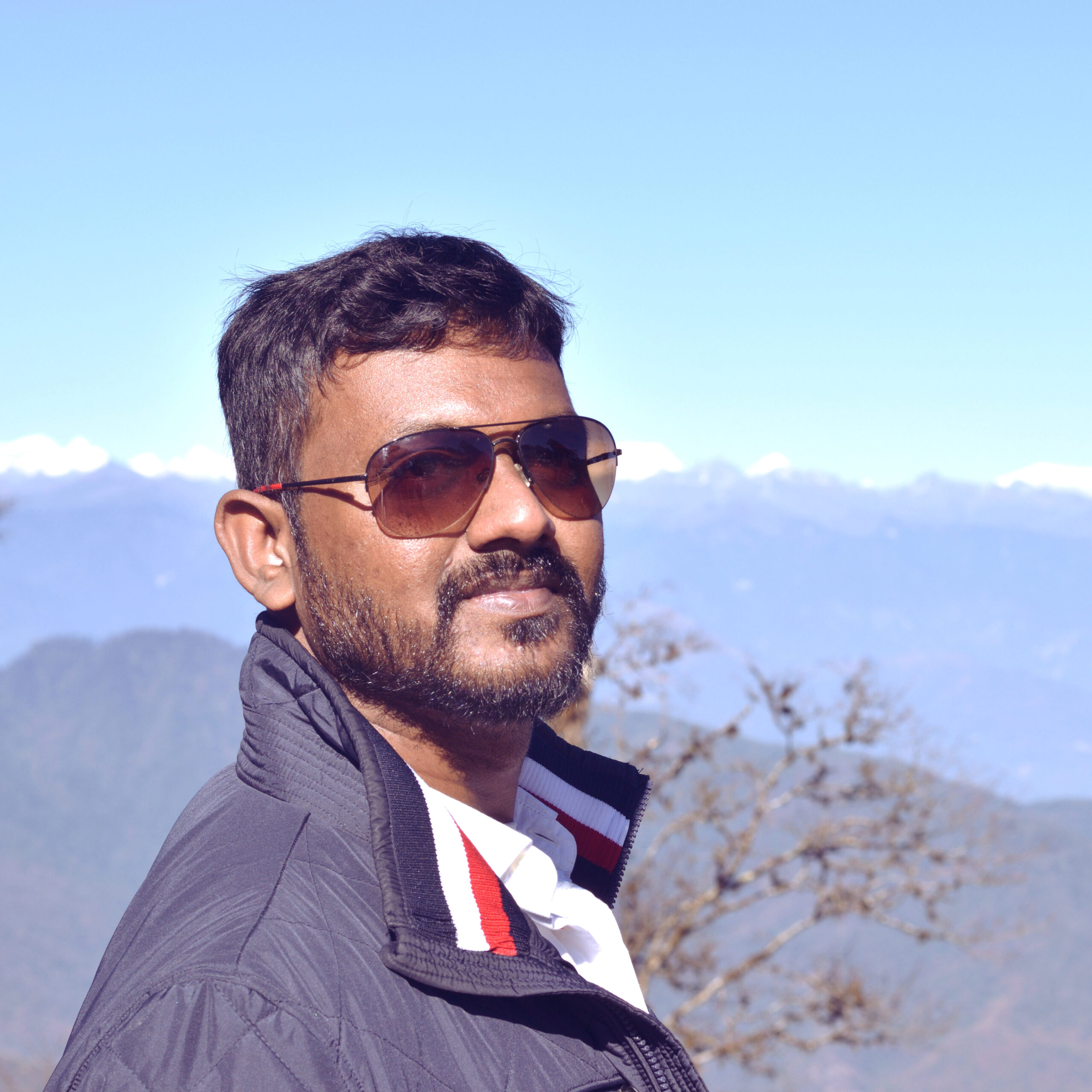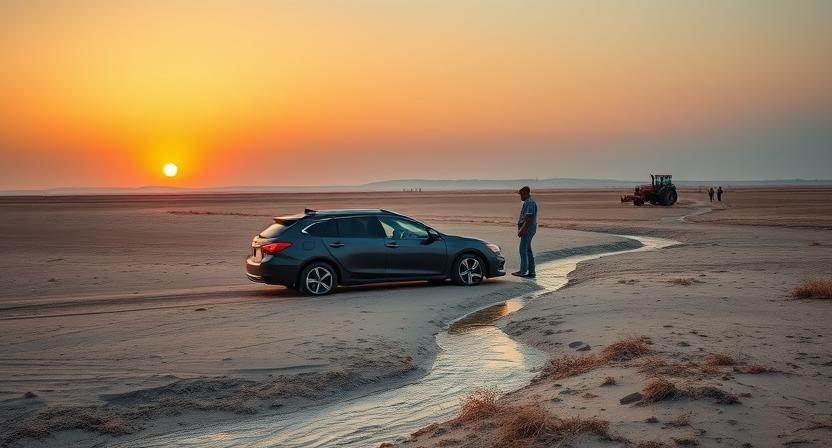I’m standing on the pedal, giving enough thrust, but the wheel keeps sinking into the sand. I shift into reverse gear and try to pull it back, but the back wheels sink even deeper. I get out of the car and look around to see if anyone is nearby. It looks like I’m the only one standing on the riverbed, which stretches almost a kilometer. It’s summer, and the river is dried up and plain. A small water stream flows in the middle, and I must have traveled about 300 meters from the riverbank, now almost near the stream.
It’s getting darker, and I need to do something to get out of this place. I collect some dried wood logs, long grass, and stones to place under the tires, thinking they might create enough friction to pull the car back. But it doesn’t work. The sunlight is fading, and it’s past 6 PM. After multiple failed attempts, I start worrying about what I will tell the car rental company. Yes, it’s not my own car. It doesn’t have four-wheel drive. It’s not meant for off-roading.
But how did I end up here?
It was the end of February 2019. I had taken a day off from work and didn’t know what to do at home. At the time, I was learning to drive and occasionally rented self-driving cars to explore. So, that day, I rented one for a short trip to a nearby city.
While driving, I crossed a bridge, and the sight of the vast riverbed with a small water stream caught my eye. I noticed a muddy path beside the bridge leading to the water. I wanted to spend some time near the stream while playing music in the car. Romanticizing the idea, I took the car off-road. But before I could reach the stream, the weak mud path started engulfing the car wheels in sand.
I hadn’t thought about my car’s capabilities or my own driving skills, and now, in panic mode, I started blaming myself. Then, it hit me—this problem was beyond my capability, and I needed to seek help.
I locked the doors, took the key, and started walking toward the riverbank. After walking for a minute, I spotted a group of people loading sand onto a tractor. They were preparing to leave the river. Finding them gave me relief. I approached them for help and explained my situation. I even altered my story, telling them I had driven down to the stream to wash my car. I don’t know if they believed me, but after seeing my exhausted face, they didn’t question further.
At first, we planned to tow the car with the tractor, but one of them suggested that a simple push might be enough.
“Will it work?” I asked.
“Sure, it’s not that bad,” one guy replied.
Hearing that, I started feeling a bit better. To comfort me further, they mentioned they had a bulldozer nearby in case this didn’t work. I smiled nervously.
There were five of us, including me, pushing the car while another guy sat inside. Within a minute, we managed to pull it out of the sandpit. I was so relieved. The weight of stress lifted off my shoulders. I felt incredibly grateful to these strangers who had appeared out of nowhere.
I expected them to give me some advice or at least a word of caution, but they simply wished me a safe journey.
As I left the riverbed, I waved at them one last time and said, “Thank you.” Then, I rushed toward the riverbank and back onto the road.
After crossing the bridge again, I pulled the car over to the side of the road. I paused and started thinking…
If I hadn’t met those people, I would have had to walk a long distance in an unfamiliar place in the dark, hoping to find help. I might have eventually reached a nearby town and called for a local towing service. If none were available, I would have had to call a provider from the city, which would have taken even longer. If the car had suffered any damage during the recovery, I would have had to explain everything to the rental company and possibly pay a hefty fee.
There was also the risk of someone stealing the car while I was away. In that case, I would have had to report the incident to the local police, explain the entire situation during an investigation, and deal with even more consequences.
After replaying everything in my mind, I was left with one question: Why did I do this?
Going on a long drive was fine, but this? This was sheer stupidity.
I wanted to escape boredom by seeking adventure. But I didn’t consider the timing or the risks involved. I ignored all other senses in pursuit of momentary pleasure and could have paid a high price for it. While I was relieved to have come out of this situation and grateful for the help of strangers, I realized I could have avoided the chaos altogether with better planning.
Suddenly, a quote by Mark Manson surfaced in my mind:
“Choose your problems wisely.”
I wanted to solve the problem of boredom by creating another problem—having an adventure—so that I could feel good temporarily. As humans, we need to solve problems to survive and find happiness, but that doesn’t mean we should create unnecessary ones.
If touching a hot stove will burn your hand, you don’t touch it just for the sake of adventure. Happiness comes from solving meaningful problems, not from making reckless choices.
That doesn’t mean we should avoid adventure or exploration. They are necessary and a part of human nature. But doing them recklessly, without thinking through the consequences, serves no real purpose.
You can’t escape problems in life—but you can choose the right ones. When you tackle the right problems, even the suffering becomes meaningful.


Leave a Reply